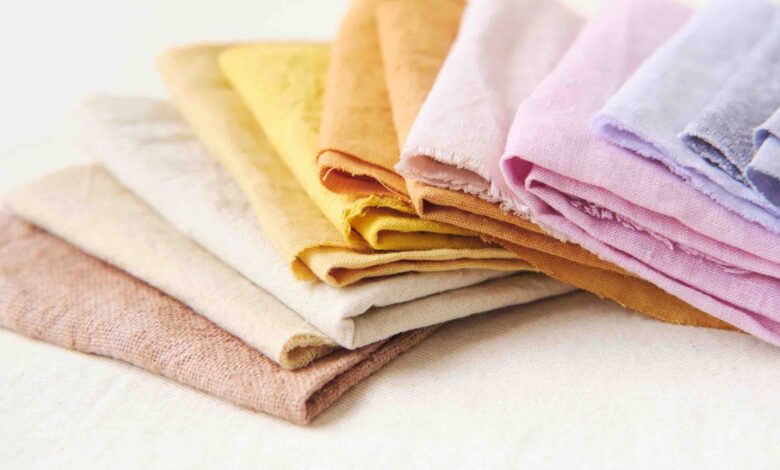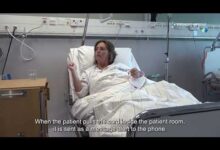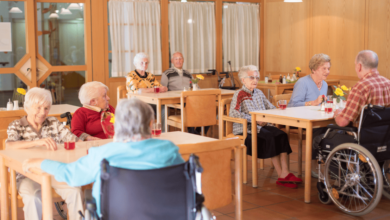Best Innovative Nursing Products of 2023

The COVID-19 pandemic was a catalyst for improving patient care through technology and healthcare innovation. Furthermore, during the height of the pandemic, nurses had to think on their feet and improvise. For example, according to one article published in Issues in Science and Technology, nurses would moisturize the straps of their masks so they didn’t break when removed or would refit their gowns with safety pins. Additionally, nurses would move infusion pumps to hallways, so they could replace bags and simultaneously respond to alarms without the need to enter a patient’s room. In a time many nurses still refer to as a “war zone,” there is no denying that the global COVID-19 pandemic sparked healthcare innovation throughout the industry.
On that note, we have researched the industry’s top innovative healthcare products and technology trends created to make healthcare more sustainable, safer, and more comfortable. From antimicrobial linens to electronic medication administration, read on for the best innovative nursing products of 2023.
Antimicrobial Linens

The science behind antimicrobial linens is fascinating. Antimicrobial linens can prevent contamination by infectious microorganisms by helping to slow the spread of germs in a healthcare environment. And while there continues to be debate about how effective antimicrobial textiles really are, the COVID-19 pandemic certainly inspired germicidal cleaning developments. One example comes from Hong Kong, where researchers from The Hong Kong University of Science and Technology “developed a multilevel antimicrobial polymer (MAP-1) coating that can effectively kill viruses, bacteria, and even hard-to-kill spores”.
So, how do antimicrobial linens work exactly? Antimicrobial linens or fabrics are made of silver fibers that can be woven into a range of textiles to combat microbes. These fine silver strands carry a charge that is opposite to those present in bacteria. When the silver strands attract the bacteria due to electromagnetic forces present, the cell wall of the bacteria is destroyed. The bacteria are thereby eliminated before they have a chance to multiply. In addition to being antimicrobial, the fabrics also have special qualities, such as being odor-resistant, bleach resistant, and longer-lasting than traditional fabrics.
Electronic Medical Administration
Electronic Medical Administration (eMAR) is an advanced handheld software that administers and documents medication effectively and reliably. Moreover, the elimination of a paper trail streamlines the process of distributing, ordering, and tracking medications and treatments.
This type of software can easily provide real-time patient records and up-to-date patient data for high accuracy. For these reasons, eMAR is becoming a popular software application used in a variety of healthcare settings, such as senior living homes, assisted living communities, and group homes for people with intellectual and developmental disabilities (IDD).
What are the benefits of using eMAR software? Studies show that medical facilities using electronic medical administration software witness a significant drop in human errors, thus making it one of the best innovations for workflow efficiency. Overall, eMAR is reliable software with minimal human error that distributes medication safely and effectively.
UV Disinfection
Maintaining sanitation at a microscopic level became a focal point of healthcare facilities battling the COVID-19 virus. That said, traditional forms of disinfection through autoclave sterilization—while still highly effective in eliminating microorganisms such as bacteria and spores—have a slower disinfection time. Furthermore, autoclave sterilization may be slightly less effective in killing pathogens that cause infectious diseases. That’s where ultraviolet disinfection (UV) comes in. UV disinfection is fast, efficient, and adaptable to most healthcare settings.
How do UV disinfection devices work? According to a fact sheet by the Environmental Protection Agency, “an Ultra Violet system transfers electromagnetic energy from a mercury arc lamp to an organism’s genetic material. When the UV radiation penetrates the cell wall of an organism, it destroys the cell’s ability to reproduce”. As a result, UV systems have become one of the best infection control solutions on a microbial scale. Additionally, UV disinfection devices like lamps or sanitizing boxes need minimal human interaction. Lastly, UV sanitizing technology can easily be adapted to meet the requirements of a variety of healthcare environments, making it one of the most effective cleaning tools in decreasing the spread of deadly viruses and bacteria.
Ergonomic Seating
Ergonomic seating in healthcare settings includes beds, chairs, or any type of seating conditions that can be adjusted for the user’s comfort. In a medical facility, ergonomic seating is more than just a luxury; in many scenarios, it’s a requirement. For example, ergonomic furniture is designed to benefit a patient both during and after certain hospital procedures, such as during post-surgery recovery.
How does ergonomic seating function? Ergonomic seats have adjustable heights and angles that both patients and nurses can control. Ergonomic seats can even be designed to accommodate patients with severe skeletal and muscular conditions, giving them proper support and relief when seated. And while ergonomic seating is essential for providing comfort and preventing injury among patients, ergonomic seating is also beneficial for nurses. One example of an ergonomic chair for nurses is a standing workstation, whose height can be adjusted for nurses while they are standing. Ultimately, ergonomics in healthcare settings is essential for prioritizing patient comfort and reducing the risk of injury among medical workers.
Nursing Informatics
Nursing informatics is not a singular product but a concept that combines science, medicine, and information engineering to create healthcare innovation that upgrades an already existing practice. In simpler terms, nursing informatics aims to improve the health of patients most efficiently and cost-effectively. One example of a nursing informatic upgrade is the invention and application of smart IV pumps. Smart IV pumps are automated to distribute critical fluids to patients using minimal human interaction. Moreover, smart IV pumps can be programmed to deliver drip medications with high-accuracy dosing. Therefore, nurses don’t have to continuously tend to the patients on IV pumps, thus allowing nurses to allocate their attention to more serious situations at hand. While this is just one example of how nursing informatics is changing the landscape of accuracy and efficiency in a healthcare setting, when integrated correctly, nursing informatics can greatly improve patient care.
New Healthcare Innovation

Nursing shortages, patient surges, and the need for advanced technology in healthcare settings are all factors that call for immediate healthcare innovation. At the same time, successful healthcare innovation is taking place around the globe and improving both the lives of nursing professionals and their patients. Therefore, making a goal to prioritize healthcare innovation, such as developing new and upgraded treatment options, is key to providing convenient, effective, and quality care in a diverse range of settings within the healthcare industry.







